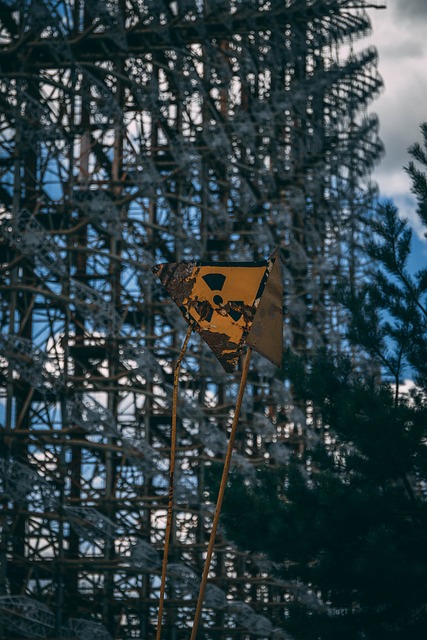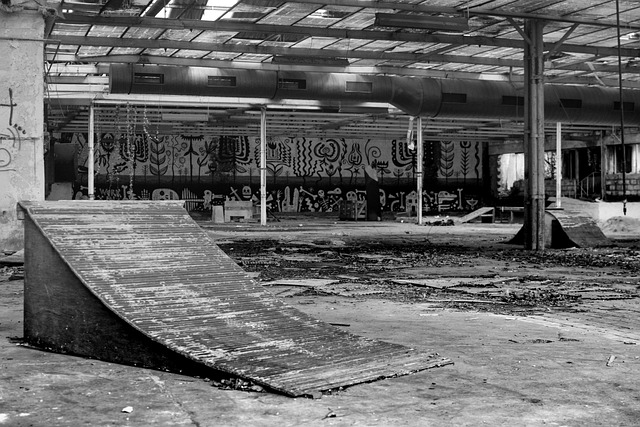Smoke odors from water-damaged homes persist due to smoke particles adhering to surfaces, with varying absorption rates based on materials. To prevent burst pipes and subsequent smell issues during San Antonio's winters, insulate exposed pipes, maintain indoor temperatures, and inspect plumbing regularly. If pipes burst, take immediate action: shut off water, remove damaged items, dry the area, and engage professional restoration services to avoid mold growth risks. A strategic approach combining source identification, ventilation, professional cleaning, neutralizers, humidity control, repairs/replacements, and insulation can effectively restore homes post-fire.
After a fire, recovering your home from smoke odors is crucial. This article guides you through understanding and remediating persistent smells, offering essential tips tailored for San Antonio residents navigating winter’s challenges. While cold weather can bring its own issues, such as burst pipes, we’ll also provide strategies to prevent water damage during the winter months. Discover effective remediation techniques and protect your home year-round.
- Understanding Smoke Odors and Their Sources in Your Home
- Step-by-Step Guide to Effective Remediation Techniques
- Preventing Water Damage from Burst Pipes During San Antonio's Winter
Understanding Smoke Odors and Their Sources in Your Home

Smoke odors can permeate every nook and cranny of your home, leaving behind an unpleasant residue that lingers long after a fire is extinguished. Understanding where these odors originate is key to effective remediation. In homes, smoke odors are often carried by water damage, especially during winter when preventing burst pipes in San Antonio becomes crucial. Water-borne contaminants from damaged pipes can introduce unwanted smells into your living spaces.
Beyond water issues, smoke particles adhere to surfaces like walls, ceilings, and furniture, releasing their pungent aroma over time. Different materials absorb and release odors at varying rates. Carpeting, for instance, can trap smoke particles, while hard floors might gather residual scents around baseboards. Knowing these sources is essential when planning a thorough remediation process, ensuring that every trace of the lingering smoke odor is eliminated.
Step-by-Step Guide to Effective Remediation Techniques

Remediating smoke odors effectively involves a systematic approach to ensure your home in San Antonio is restored to its pre-fire condition. Here’s a step-by-step guide to help with the process, especially relevant for preventing burst pipes during winter when cold temperatures can exacerbate issues:
1. Identify and Address the Source: Begin by pinpointing where smoke and odor are most prevalent. This could indicate damaged areas like walls, ceilings, or floors that require specialized attention. Preventing burst pipes is crucial here; ensure your home’s plumbing system is well-insulated and maintained to withstand winter’s chill.
2. Heavily Ventilate: Open windows and doors to facilitate air circulation. This step is vital for dispersing persistent smoke odors. Using fans can expedite the process, especially in smaller spaces. Regular ventilation not only helps remove smells but also reduces moisture levels, a common byproduct of fire damage and a potential catalyst for mold growth.
3. Professional Cleaning: Engage the services of experienced professionals who specialize in smoke and odor remediation. They employ advanced equipment and techniques to safely clean affected areas. These experts know how to handle various materials, from furniture and carpets to structural components, using environmentally friendly products that prevent further damage while effectively eliminating odors.
4. Odor Neutralization: Implement odour-neutralizing treatments. This could involve using odor absorbers, air purifiers, or specialized chemicals designed to break down and eliminate smoke molecules. Maintaining proper humidity levels in your home can also aid in neutralizing smells, so consider using a dehumidifier if necessary.
5. Repair and Replace: Once the remediation process is complete, address any structural repairs, including fixing or replacing damaged areas affected by smoke and water. This step ensures not only the aesthetic restoration of your home but also prevents future issues related to weakened structures, especially during San Antonio’s winter months when extreme temperatures can compromise building integrity.
Preventing Water Damage from Burst Pipes During San Antonio's Winter

San Antonio’s winters can be unpredictable, with sudden drops in temperature causing water within pipes to freeze and burst. This not only leads to significant property damage but also creates an ideal environment for mold growth if left unaddressed. To prevent these issues, it’s crucial to take proactive measures during the winter months. Homeowners should consider insulating exposed pipes, especially those near exterior walls and windows, using materials designed for cold-weather protection. Additionally, setting thermostats to a consistent temperature throughout the day, keeping heat in, can help prevent pipe freezing. Regular inspection of plumbing systems and quick response to any unusual noises or leaks are also vital in preventing burst pipes during winter in San Antonio.
For those who already face water damage due to burst pipes, prompt action is essential. The first step is to turn off the water supply at the main valve to stop further leakage. Then, remove damaged items and dry out the affected area as quickly as possible using fans or dehumidifiers. Professional assistance from a reputable smoke odor remediation service should be sought for thorough cleaning and restoration, ensuring that no residual moisture or mold remains, which could lead to long-term health issues.
In the face of San Antonio’s chilly winters, understanding and addressing smoke odors, along with preventing water damage from burst pipes, are essential components of home recovery. By grasping the sources of these issues and employing effective remediation techniques, you can ensure a healthier, more secure living environment. Remember, proactive measures, such as preventing burst pipes during winter, can save you from costly repairs and significant inconvenience.
